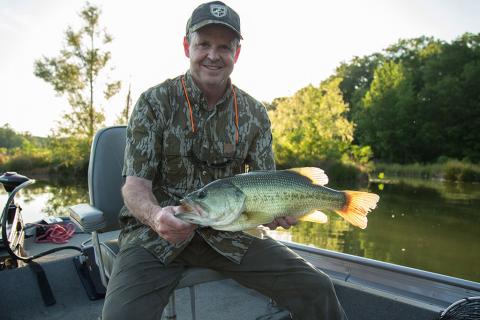Scott Bestul | Originally published in GameKeepers: Farming for Wildlife Magazine. To subscribe, click here.

I’d swear the buck had emerged from a hole in the ground. One minute I was looking at a beautiful patch of prairie—highlighted by golden autumn sunlight but devoid of deer—and the next I was staring at the antlers of a gorgeous whitetail. The buck shook himself, preened his flanks and back, and then started a steady walk toward a nearby soybean field. That hunt happened several years ago, on one of my first trips to western Kansas. I’ll never forget driving into that prairie country and thinking “how am I ever going to find a deer out here? There are no trees!” But two days into the hunt, this big-woods bowhunter had made a startling observation; while some prairie deer liked to bed in or near trees, the vast majority seemed to adore the lush prairie grasses, and not only for bedding. It was truly an eye-opening experience for me.
In the many years since, I’ve come to appreciate the tremendous attraction that prairie grasses hold for whitetails. Not long after that first hunt, I met Ross Greden, a fellow whitetail fanatic, passionate land manager, and owner of Back Forty Wildlife Management & Consulting. Ross was all too familiar with the benefits of prairie grasses to deer, and was a budding expert in establishing and maintaining this essential, yet increasingly rare, type of habitat. As we became friends, Ross paid me the high honor of inviting me to help with the burning of a small patch of prairie grass one spring. Though I was little more than an onlooker at that burn, the experience totally hooked me and I’ve been relying on Ross’ expertise to learn more about prairie lands management.
An Essential - Yet Rare - Habitat Component
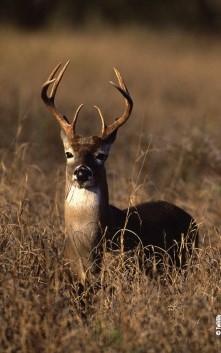
provide tremendous cover, but
the forbs typically found within are
an excellent food source.
If, like me, you come from a region where “deer habitat” means “trees,” you might be surprised at the importance of prairie to whitetails. And while timber is undoubtedly important to deer, savvy whitetail managers and hunters know this; deer are creatures that “live on the edge”…meaning they’re mostly attracted to the zone where two or more habitat types meet. Perhaps even more important, deer crave diversity, meaning they rarely have all their needs met by just one habitat type. Prairie grasses meet both those criteria, and can, therefore, be an important part of any habitat plan.
No one knows this better than Greden, who can laud the praises of prairie as well as anyone. “In many parts of the country, whitetails evolved with large sections of native prairie as one of their preferred habitat types,” he says. “And many of us, including me, have taken a while to recognize the importance of that relationship. We’ve got a good excuse though; unless you live somewhere in the West, most of the prairie that once existed is simply gone and has been for decades. Here in Minnesota, we have only about 1% of the prairie that existed in pre-settlement times.”
Prairies are important to whitetails on several levels, but one of the most important is also the simplest; they provide food for deer. “At least 44% of a whitetail’s diet throughout the year consists of forbs,” he says. “And a diverse stand of prairie grass will contain multiple species of forbs that deer love. It’s funny because I plant a lot of food plots every year, and many of them are near, or even adjacent to, prairie grass. And I’ll watch deer walk through the food plot, wade into the prairie grass, and start eating.” Food is only one reason whitetails utilize a patch of prairie.
As I learned in Kansas long ago, deer quickly recognize the bedding/sanctuary cover provided by grassland. “We see that over and over on the properties I work on in Minnesota,” Greden notes. “Deer bed in prairie grass naturally, but especially when they’re being pressured from hunters. I think it's a place a lot of hunters don’t think to look, and deer learn in a hurry those little places where no one bothers them. Even more important, prairie grass is an ideal fawning habitat; grasses are not only dense but tall, which can make it very difficult for predators to find a bedded fawn.”
There’s more. Greden says prairie grass is often an ideal staging area for deer enroot to food plots or farm fields. “It’s perfect when you look at it from a buck’s viewpoint,” he says. “They can see over the grass to scan a field for danger, and maybe grab some forbs as they wait. And if they see danger, safety is as simple as lying down. You want to see a deer pull a vanishing act, watch them in prairie grass. Naturally, whitetails aren’t the only species to benefit from a prairie planting. Songbirds, game birds and small game species are all winners, as are countless smaller critters and insects. In fact, many biologists feel there may be more species diversity in a prairie than in many other habitat types. And if you’ve ever seen prairie flowers in full bloom, you know there are aesthetic appeals, too.
The Nuts & Bolts of Prairie Management
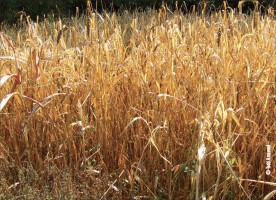
a drill because the small, light and
sometimes fluffy seeds are difficult to
manage through a broadcaster.
If you’re sold on establishing or restoring prairie habitat on your property, Greden advises adopting the same mindset as you would when starting a food plot. “The site you choose is everything,” he says. “Obviously you want something that receives as much sunlight as possible; a half-acre surrounded by timber is not going to work. I look for something out on the edge of woods, and the larger the better. To be really beneficial, I prefer to have at least an acre to work with. In this region, a 1-5 acre prairie planting is probably the smallest I work with. Finally, I’ve studied carefully how often deer use a prairie planting and upland sites are far preferred to those located in a valley or depression. And that goes for not only deer, but upland birds. I think it’s directly related to their vulnerability to predation; wildlife is just more vulnerable in a low-lying plot.” Like the food plot, a prairie planting benefits from careful preparation. “Anyplace you can get one, get one,” Greden laughs. “But some sites are better than others. I’ve worked on several cattle pastures the owner wanted to revert to prairie, and they’re a real challenge. Inevitably there are tons of dormant weed seeds lying in the dirt, and as soon as you work that soil, the weeds explode. It can take a lot of time, and extra mowing, to keep those weeds at bay and let the grasses establish themselves. The ideal place, in my experience, is a field that’s been planted to Roundup-ready soybeans for at least a couple of years. The weeds will be well under control, and as soon as the prairie seeds you plant get the right conditions, they’re going to take off.”
Naturally, starting a prairie requires seed, and seed you may not find at your local elevator. “I’ve had a lot of success with a mix prepared and supplied by our local DNR wildlife manager,” Greden says. “It has 43 different species that are native to this area. That diversity is important, as there is something attractive to deer and other wildlife throughout the entire growing season. You can also obtain mixes through other state and federal agencies, such as the Natural Resources Conservation Service, a division of the Department of Agriculture. Private growers that specialize in prairie plantings are another resource for prairie seed. Actually planting a prairie is best done with a drill, as many of the seeds are tiny and need to be planted at a specific depth. State game agencies, as well as local NRCS offices usually have a seed drill such as the ones made by Truax or Great Plains that they will loan or lease out. As noted, establishing a prairie is typically expensive, so the extra cost of leasing a drill that does the job right is a legitimate expense. The good news about a prairie planting is that maintained properly, it will last for many years. This brings us to the next point….
Go For the Burn: Managing Prairie Habitat
Most of us know the basics of food plot maintenance, but prairie plantings are a whole ‘nother creature, largely because once they are planted, the only way to keep them vital and growing is to destroy them…with fire, that is. While a rip-roaring blaze might set a forest back for years, prairie grasses thrive in the wake of a burn. Indeed, the best way to invigorate and regenerate prairie grass is to torch it, usually every 3-4 years. I’ve accompanied Greden on two different burns, and the experience is totally exhilarating; a mix of fear and excitement, with the knowledge that setting fire to something is—for once—actually a good thing.
“You start working on burns, and it’s pretty easy to get hooked,” Greden says. “It’s a pretty dynamic and exciting process.” And, it should be stressed, a potentially very hazardous one. “You can never—and I mean absolutely never—forget how dangerous this can be,” Greden says. “I always have Aldo Leopold in the back of my mind when I start a burn (the conservation pioneer died while helping with a controlled burn when he was only 61 years old). And the danger is not confined to personal safety; you let that fire get out of control, and it can do tons of damage.” The keys to preventing such damage are knowledge and preparation.
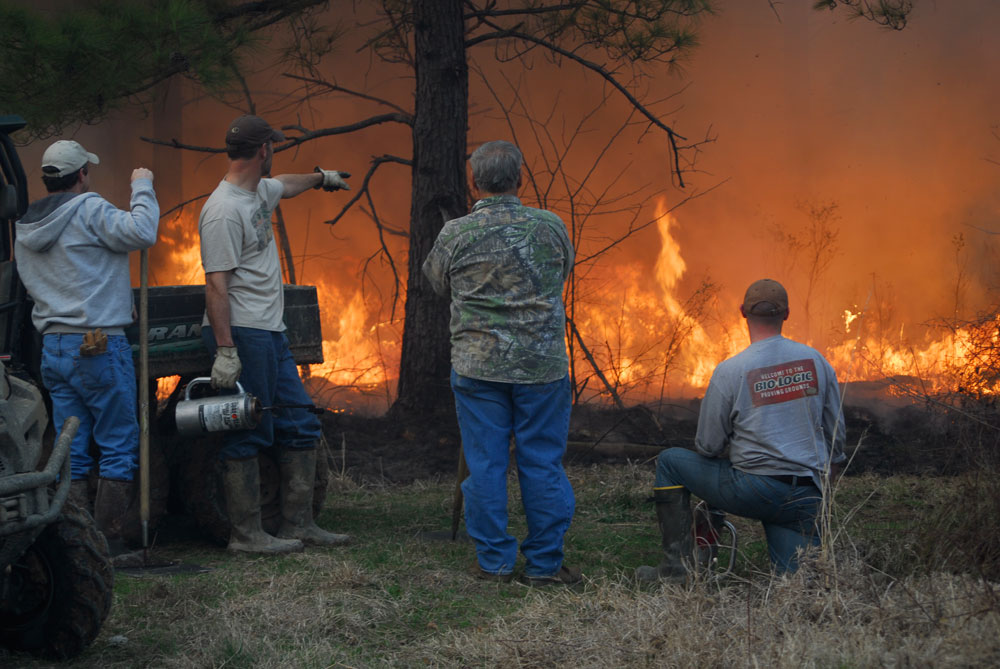
“I advise anyone interested in burning to get some training first, and then participate as a volunteer on a burn at least once before doing one on your own,” Greden advises. One good resource for burn training on the local level is the nearest state game agency or NRCS office. Another option is a group called The Prairie Enthusiasts, a nationwide group of prairie lovers that not only know how to burn but can teach a newcomer. Wearing high-quality protective gear, and using the right equipment, is critical for safe burning, according to Greden.
“For clothing, wear a safety helmet and goggles, fire-retardant shirt and pants, and leather boots and gloves,” he says. “For tools, I use a drip torch, typically filled with a mix of gas and kerosene. I always carry a quality “bladder bag” like professional firefighters use; they hold five gallons of water, have brass fittings and spray at high pressure. Other tools—such as a steel rake and a device called a “flapper” (used to put out smoldering tinder and small flames) are important, too. The rule I use is, one fire tool for each helper on the fire. Oh, and it’s hard to have too many helpers. When I started, I thought I could do it all myself, unless it was a big fire; then I needed another guy. I was an idiot. And I almost had some big fires get away on me. Get help.”
While every fire is unique according to site and specific conditions, Greden offered some general guidelines for burning. “Here in the Midwest, I do most of my burns in early spring before things start greening up,” he notes. “That also allows regenerating plants a full summer of growing. Conditions are important, too; relative humidity is an important consideration that drives what time of day I burn. Here, burning before 10 a.m. on most days is not a good idea; there’s enough dampness in the air and on vegetation to affect the fire. And on many days, the conditions are reversed after 2 p.m.; the air becomes hot and dry, and the wind picks up. It’s easy to have a fire get away from you in a situation like that. There’s even a device called a Kestrel (Forestry Suppliers Inc.) that measures wind speed and relative humidity on site, so you can make sure the call about whether conditions is right.”
Greden outlined the basics of proper burning. “The first thing you want to do is make sure you have a good perimeter of non-flammable material surrounding your area,” he says. “This is primarily farm country, so I like to burn toward a chisel-plowed field when I can get it. But other spots can make a good perimeter, such as a clover field, a road, or a mowed path. Lacking that, you simply have to create one, and that’s usually done by raking around the burn perimeter. It’s tough work; I did a burn last spring and it took four hours for four strong guys with rakes to create a perimeter. And the burn itself lasted maybe 15 minutes.”
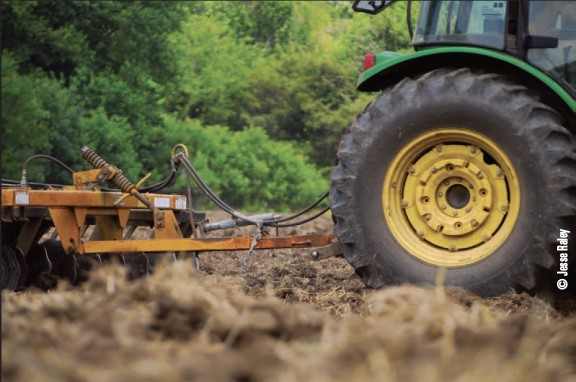
On the burns where I assisted Greden, we first created a perimeter, then he walked along one edge, lighting the grass with a drip torch. Fires start slowly and build fast, so it’s important to have helpers watching at all times and ready to put out stray flames, especially when they near the perimeter or approach objects or areas needing protection (such as a tree, and in one burn I helped with, an electrical box). Flappers can be used to extinguish flare-ups, and bladders are used to spray out trouble spots, especially along the perimeter. As a rule, fires want to burn uphill, even when a light to moderate wind fights that tendency. So keeping a vigilant eye on the high side is always advisable.
Conclusion
As I’ve noted earlier, wrapping my mind around “grass” as “deer habitat” took some doing. Where I learned to hunt, we found whitetails in the trees, and I carried that prejudice with me for many years. But after years of hunting in other habitats—the lush farmland of the Midwest, the open prairie of Kansas, the breaks and coulees of Nebraska and Wyoming—I’ve come to realize the importance of this disappearing habitat. And now, thanks to friends and teachers like Ross Greden, I’ve started incorporating prairie plantings into my own management plans. It’s been a rewarding experience, especially when I see how quickly deer respond to, and begin using, a prairie planting. Plus, every couple of years you get to light a big fire…And call it a good thing!















